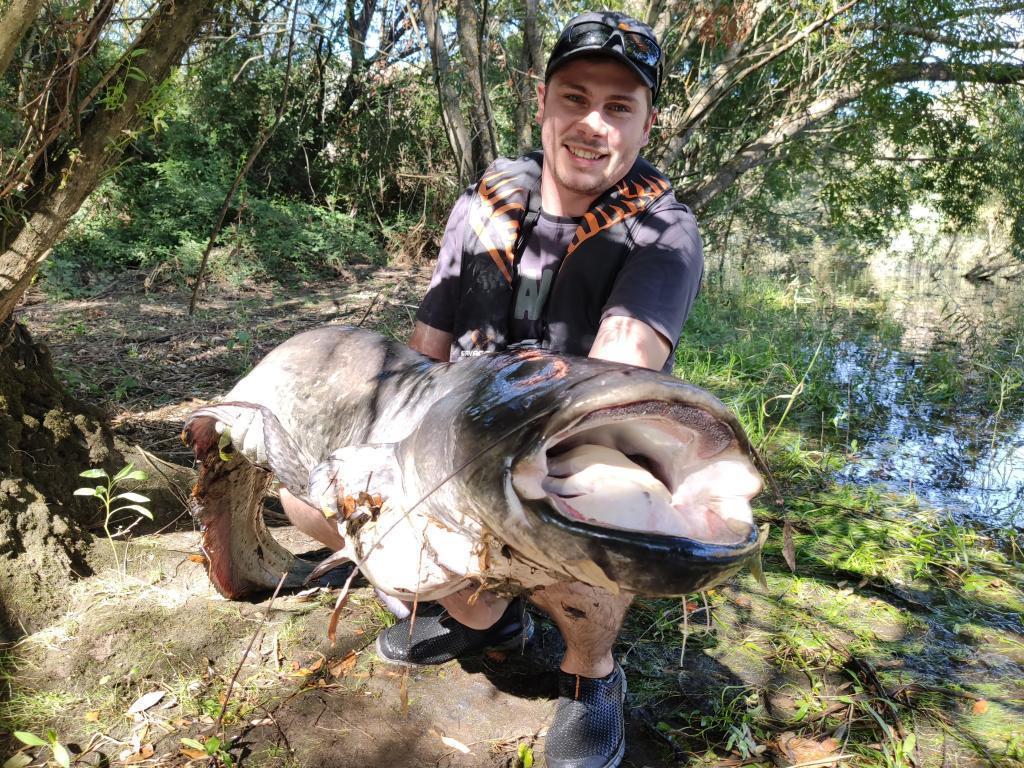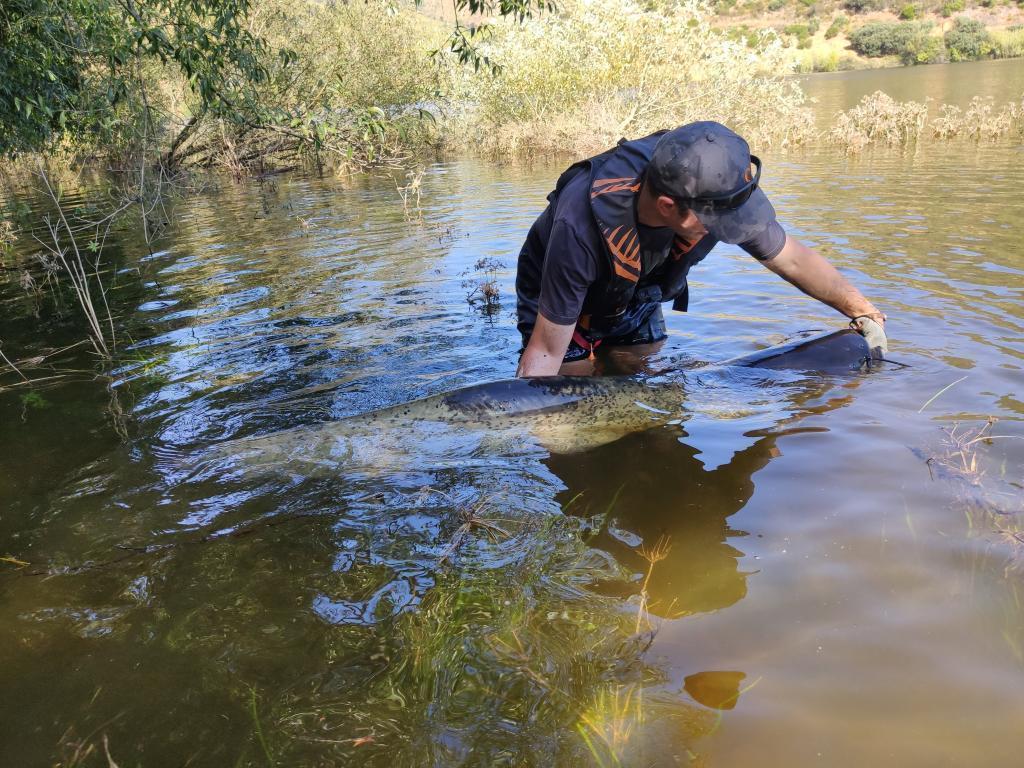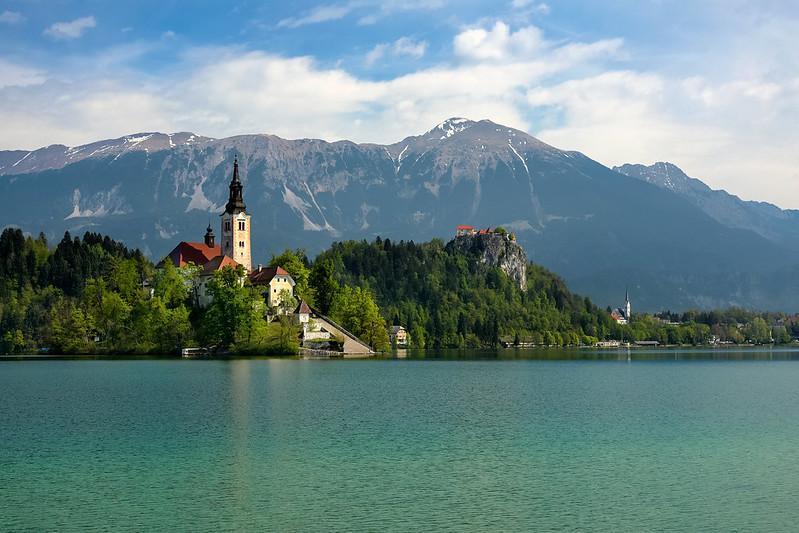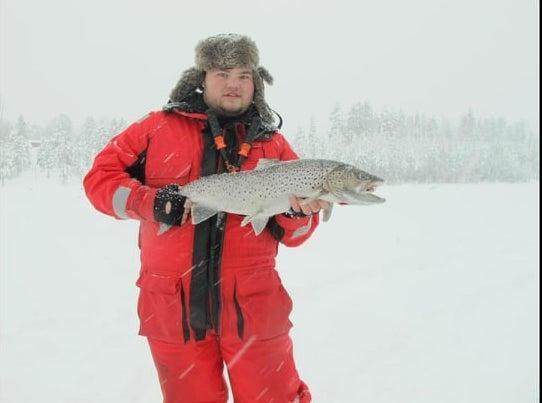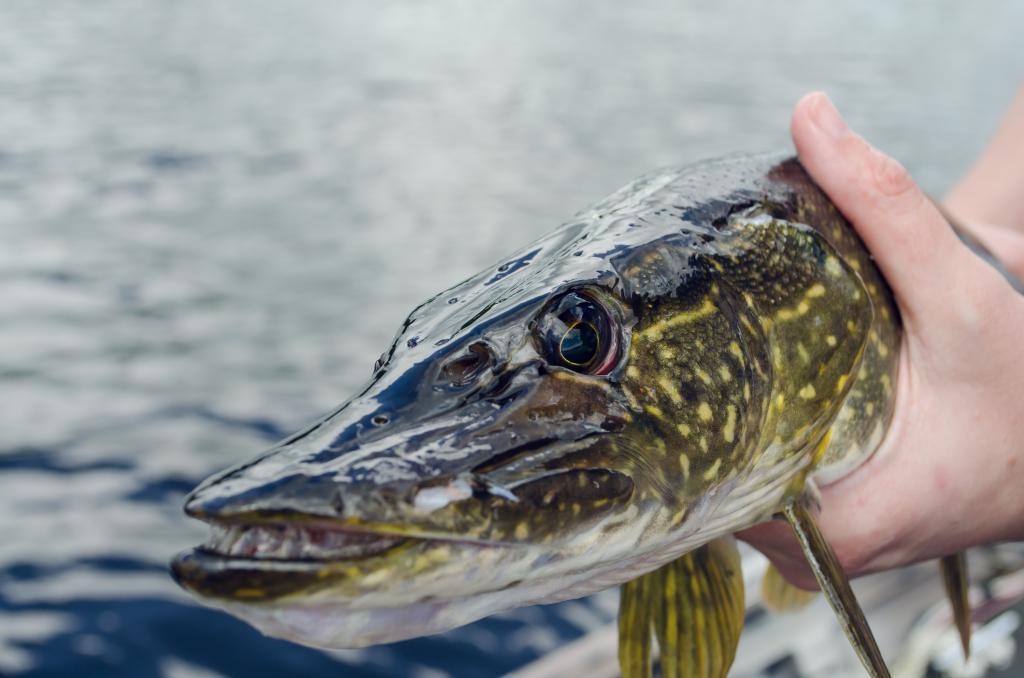This week we had the wonderful opportunity to chat with our Portuguese ambassador and experienced angler Tiago Lemos. He told a bit about fishing in Portugal and his latest catch of one of the biggest Siluros (Wels Catfish) in the Tejo River in Portugal.

Tell us when you started fishing and who inspired you? Was it a family thing?
I am the only one in my family who fishes. I was introduced to fishing by a Math professor in school, we went spinning for bass. I went once or twice with him to fish Black Bass and I loved it. After that I stopped fishing for a few years since my family’s tradition was to spend time together or go for a walk on weekends. I didn’t have people to go with and I did not have my own transport to go fishing. A few years later I became a programmer. As a programmer I had more time and financial independence which allowed me to work on my dream and I began fishing almost everyday. In 2015 I went fishing for 300 of 365 days. Non stop!
After that some brands started supporting me and I did not stop until COVID. In Portugal one cannot yet live as a professional sport fisherman. That doesn’t exist here yet, but I am trying to do it. Perhaps one day it will be possible because here in Portugal we have everything we need to do so.
How did your start fishing for Siluros (Silurus glanis) and what do you like the most about this fish?
The Siluro is a very recent thing for me, perhaps three years. In my area we don’t have Siluros, or I should say, there have only been two recorded ones. When I want to fish for siluros I have to drive three hours each way to the Tejo. There is no tradition of catching siluros, like there is in Spain.
In Portugal the Siluro is not seen as a game fish, but rather as an invasive species that is destroying everything. Because of this we cannot compete for Siluros, Zander or Pike because they are an invasive species. Nowadays every fisherman is obliged to kill invasive fishes. Despite them wanting us to fish them, in Portugal we are not allowed to fish at night in freshwater, which is when the peak of activity of these species is.
The hotspot for Siluros in Portugal is the Tejo river, which has had them upriver in Spain since 1998 and in the Portuguese part since 2014. In the Douro River it will take us some years to reach that level. I think this will be a game fish that will have an important development during the next couple of years, with more and more adepts.

Is this the first time that you catch a record size Siluro or you have had experiences like this before?
Well, I think this catch is in the top 5 fished with a rod in Portugal, but we cannot know for certain because there is no official record. In Spain it is common to find siluros of up to 2 meters in length and I think they also exist here since they get bigger and bigger every year. However, in Portugal we can only rely on what we see on the social media profiles of those anglers who fish for them. I believe that they have caught bigger ones, but fishermen haven’t recorded the moment.
The largest that I’ve caught was around 1.75 meters long, which is small compared to those in Spain. In my opinion, in Portugal, “the big ones” haven’t been caught yet because it is not yet a sought after species and the fishing gear is not the most suitable for them.
Tell us how did catching this Siluro go. Where were you?
I was at the Tejo in a kayak, looking at a sonar and recording a fishing video for Youtube. I saw there was a fish at the bottom, and I dropped my lure next to him. After a few seconds I saw another one higher up and pulled up my bait from the bottom to 19m, closer to the fish but without scaring it. Then… PUM… it began, it took about a good half hour of pulling and pulling. Me pulling up and the fish towing it down. After some struggle I had to ask my friend for help and we and we went to a beach.
In a kayak it is a bit risky to lift a weight like that because we can easily flip. At the end of the fight, there was this feeling of euphoria along with body ache. How is it possible for a fish to generate so many sensations?

What are your favorite spots to catch Siluro? What spots would you recommend to other anglers?
Well, I think the dream of every angler is to go to the Ebro in Spain because there you can find the largest ones. However I think the Tejo is a great spot, especially for less experienced anglers because there is still not a lot of fishing pressure for the Siluros like there is in the Ebro.
You might not get the big guys here because they haven’t had the time to grow yet, but we already have a large quantity and already have a good average mark. That’s quite attractive. There are Siluros of 1.5 meters, and there are many of them.
How about your recommended spots to catch other species?
Here in Portugal we have many species that are not well regarded because they are considered invasive species. But from pikes to zanders we have some interesting places.
In the north, for example, we have a recent dam, called "Barragem do Sabor" in which the number of pikes above 10 kg is considerable, and where the record is close to 16 kg at the moment. It also has a very good population of black bass, and already has many fish reaching 3 kg.
We also have an area called "Vale da Vilariça", which has dream dams for bass fishing, with some fish over 4 kg. My record there is 3,050 kg, which is already a mark that makes me more than satisfied. But I've fought bigger fish and lost. With the favorable climate, a rich diet of crayfish, these bass are serious candidates for being the biggest in Europe. The other part of their secret is that some individuals have brought genetic markers from Florida black bass which makes them bigger and more aggressive.
Is there something you would like to add?
I believe that in terms of fishing Portugal has all the right conditions to become a reference point at many levels. However, what holds us back is the mentality that only football is a sport and the rest are hobbies.
We are a small country but we have excellent conditions for sport fishing and tourism with its fantastic weather and interesting species. The proof of that is the recognition that we have gotten in the last few years with documentaries and TV specials shot here on capfishing, barbels and trout for channels such as the Spanish “Caza y Pesca”.
Thank you a lot for your time and for sharing your stories and experiences with us. I am sure many will want to follow you and watch your videos and content on the app.
Sure. I make videos to share the excitement. Sometimes I might say some bad words because I get really excited and completely forget that I am recording. Sometimes the video could be better but I’m really focused on the fish. I forget everything and I'm just living the fight. Thanks for this opportunity and thanks to everyone who supports these projects.
Photos: Tiago Lemos
